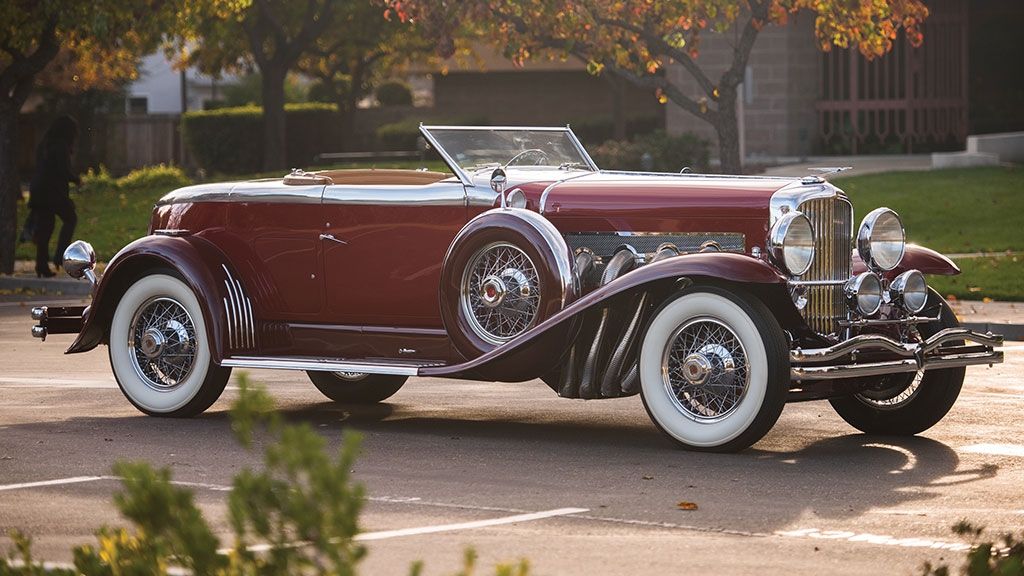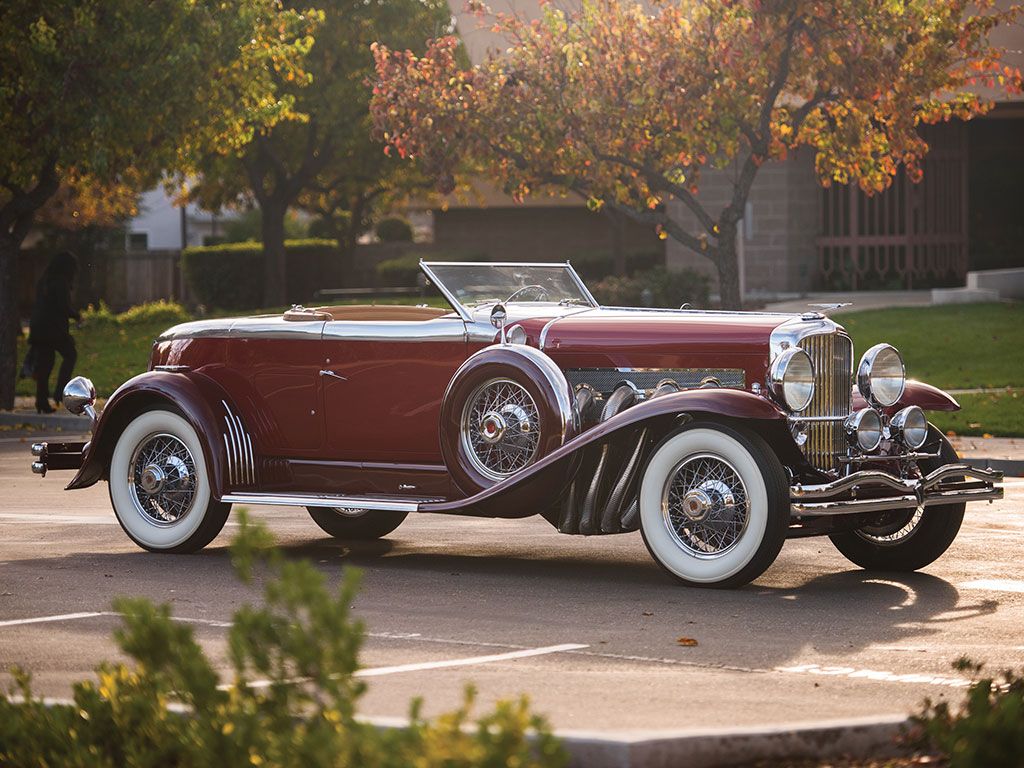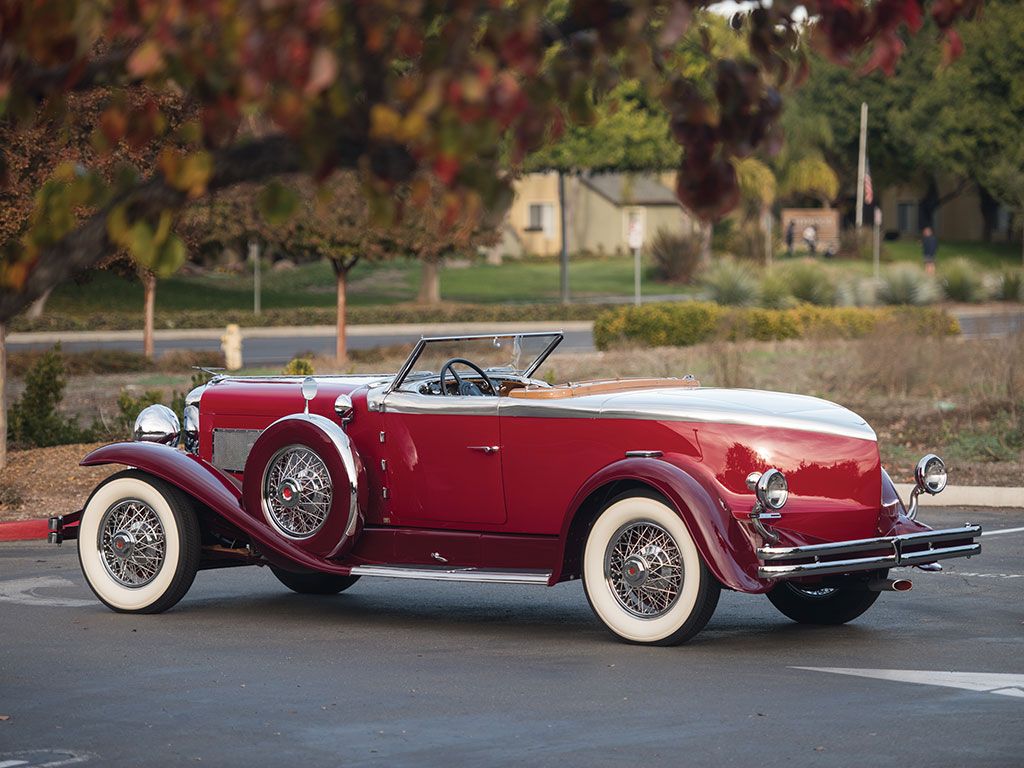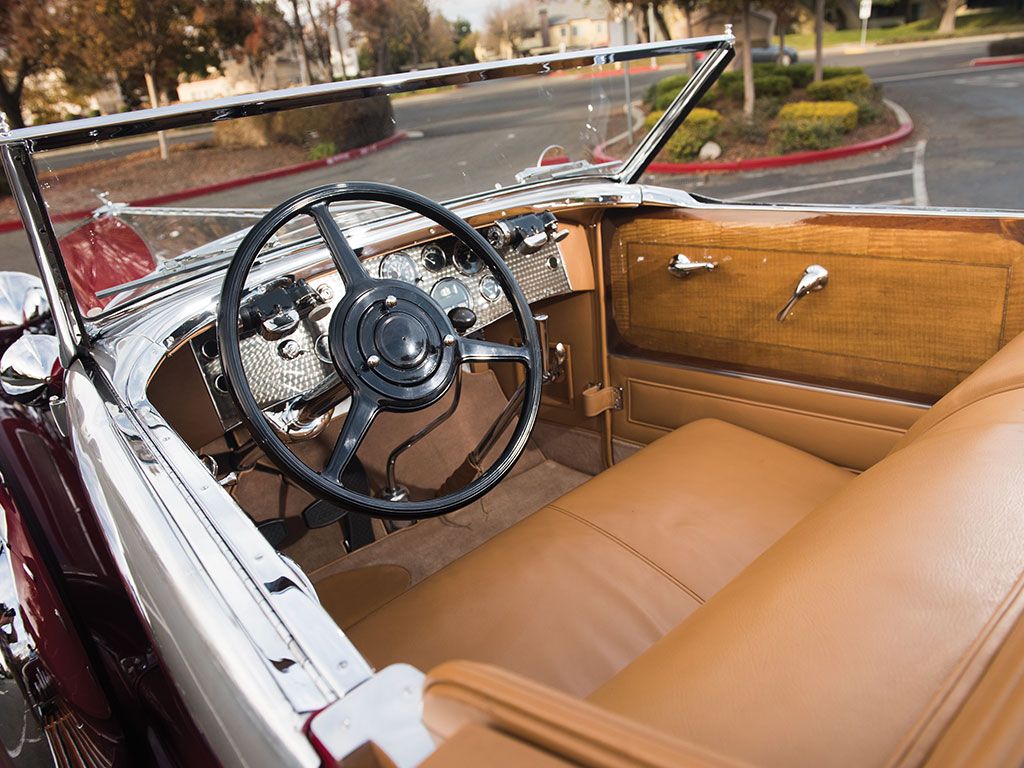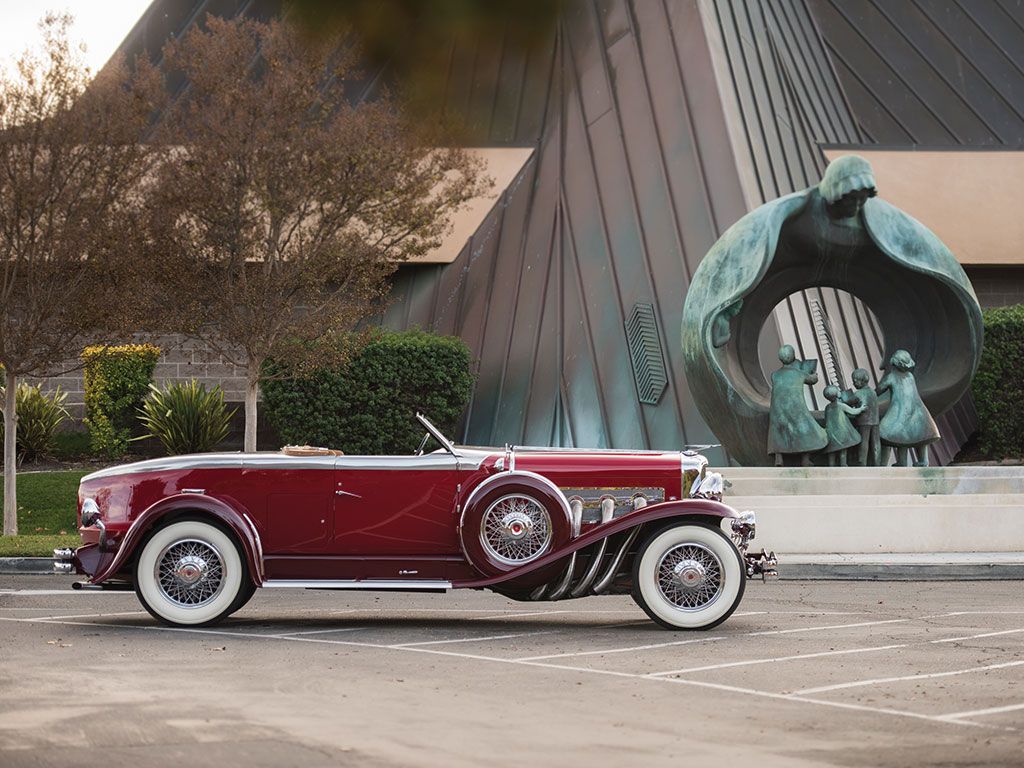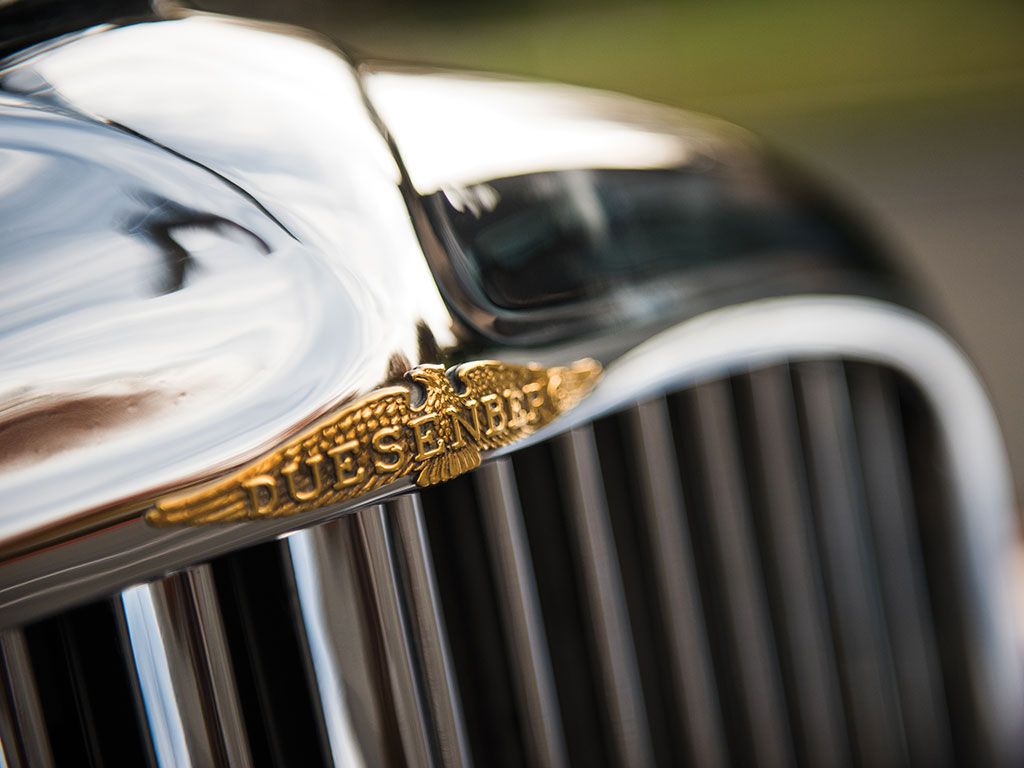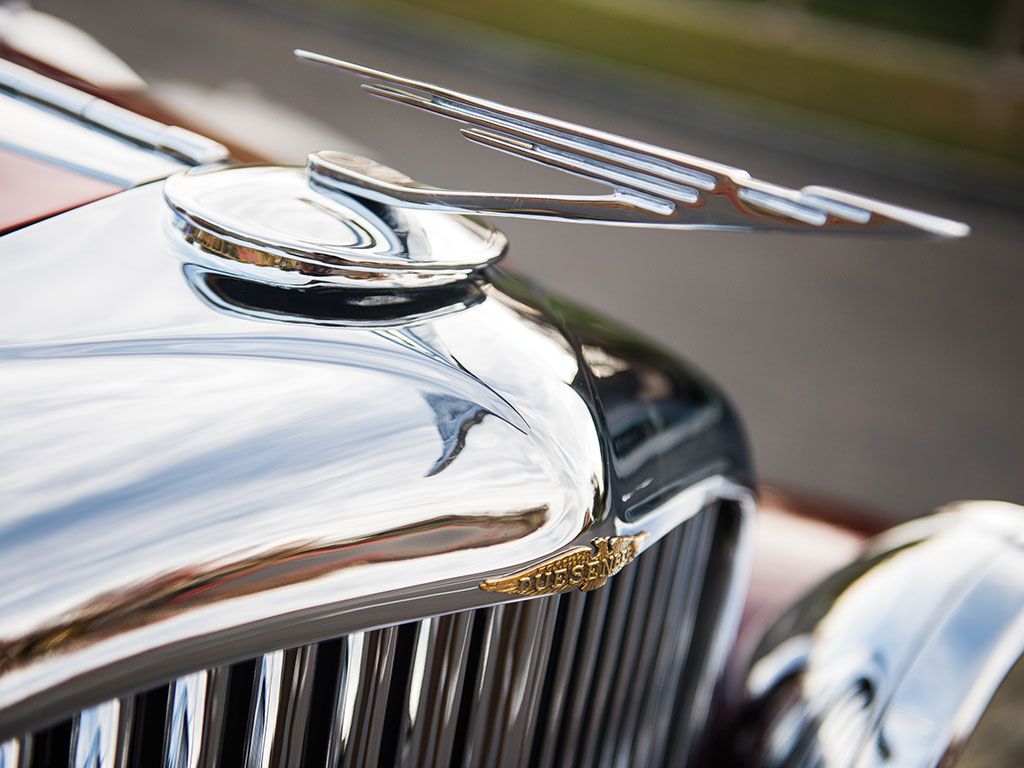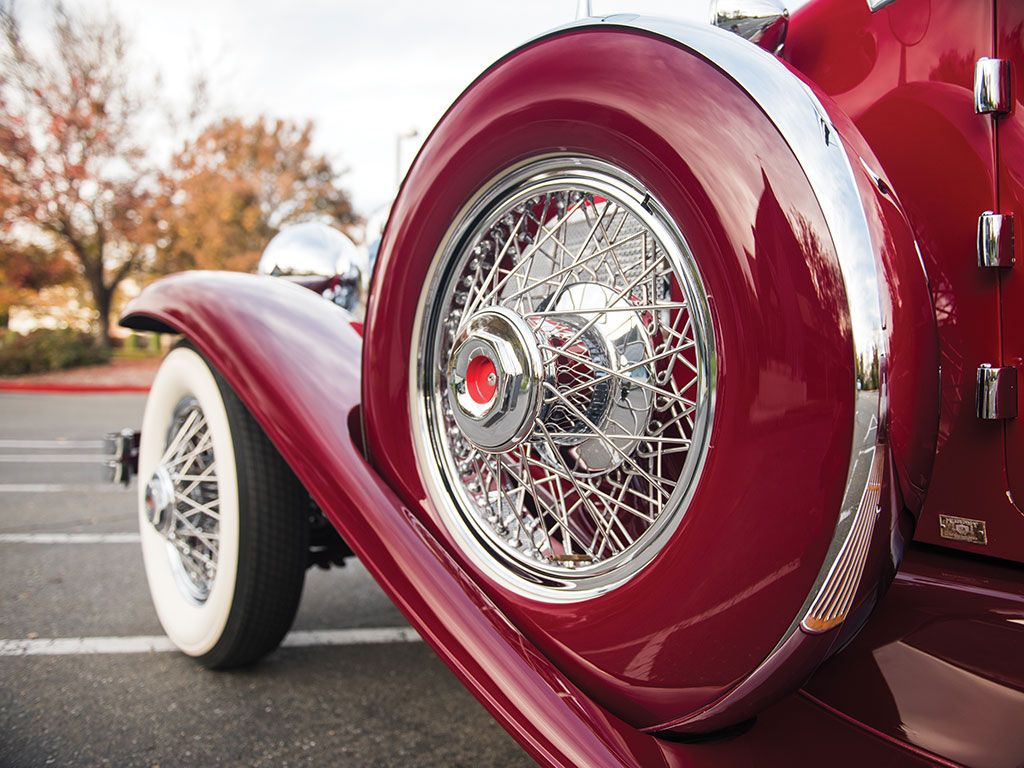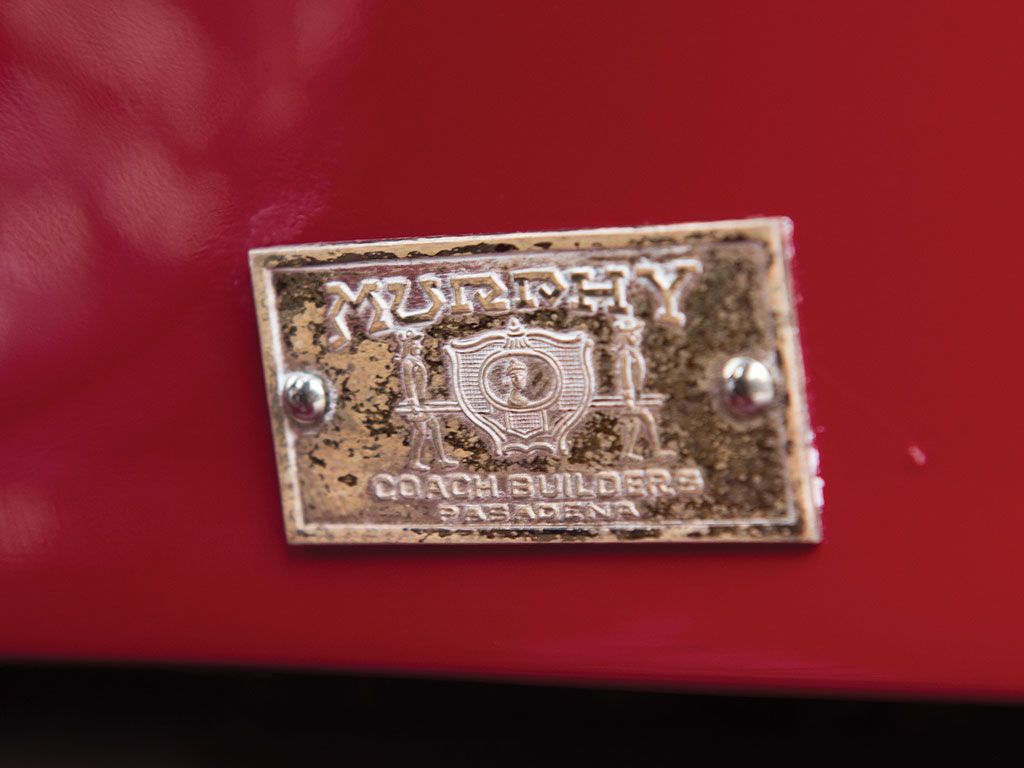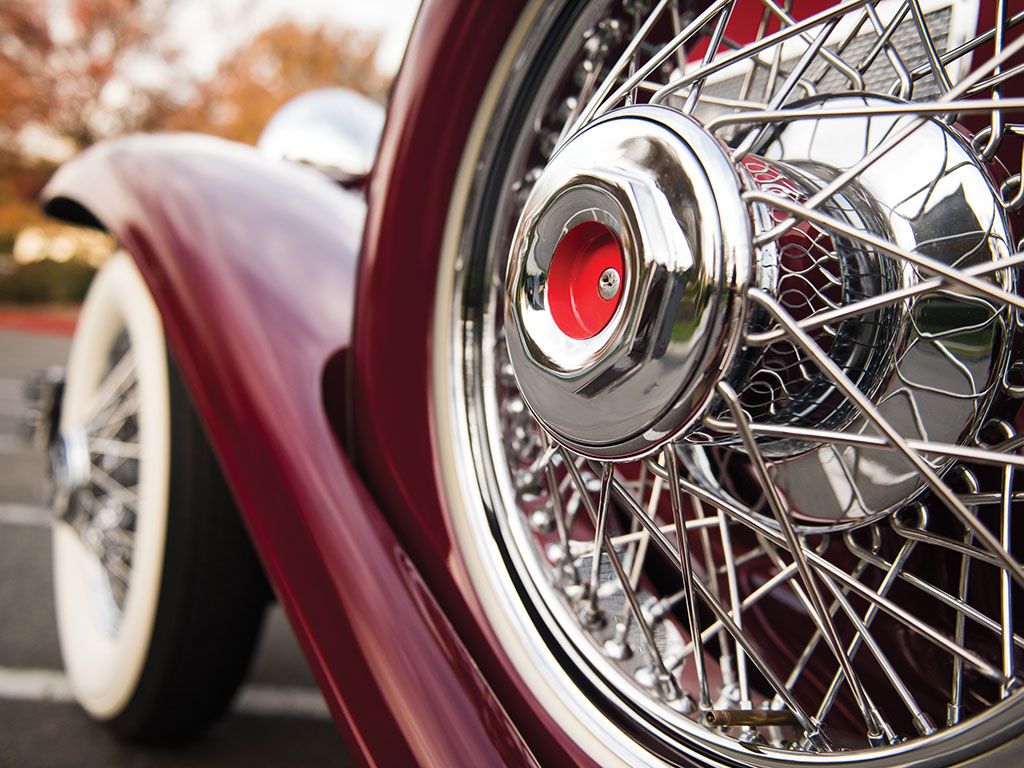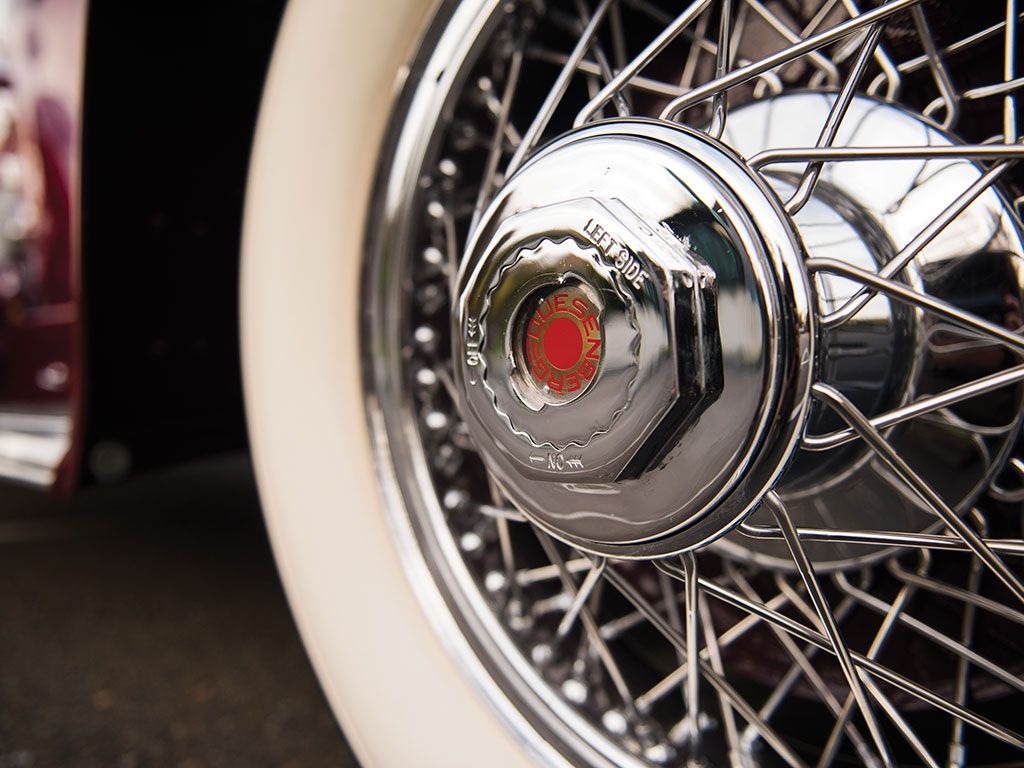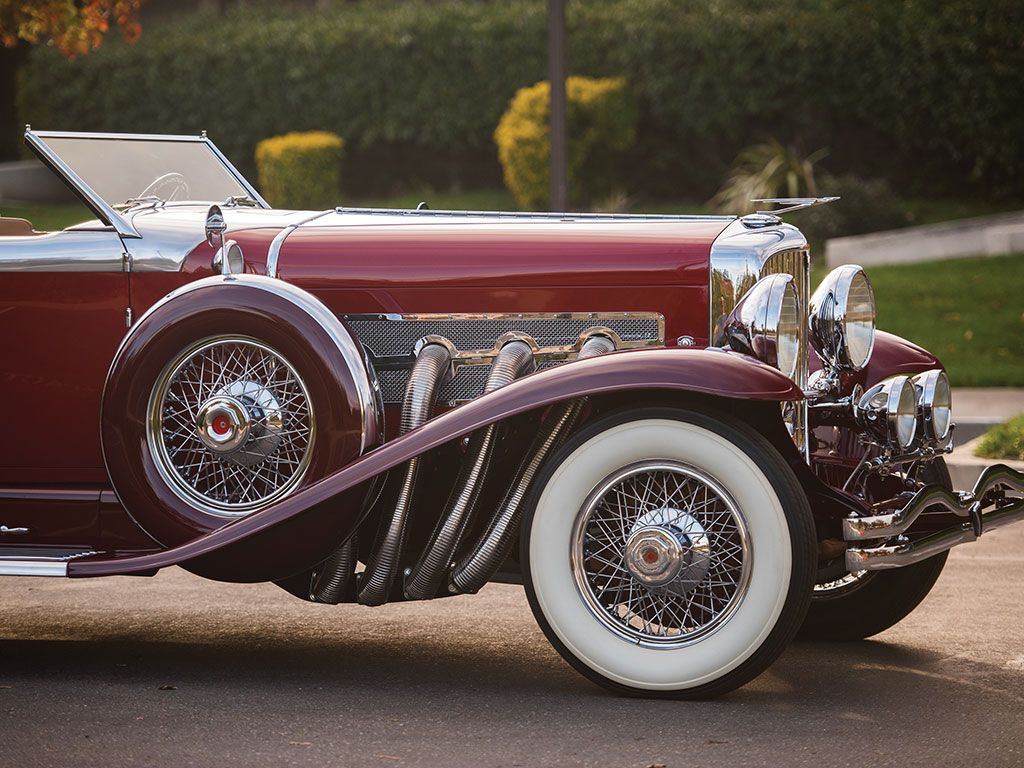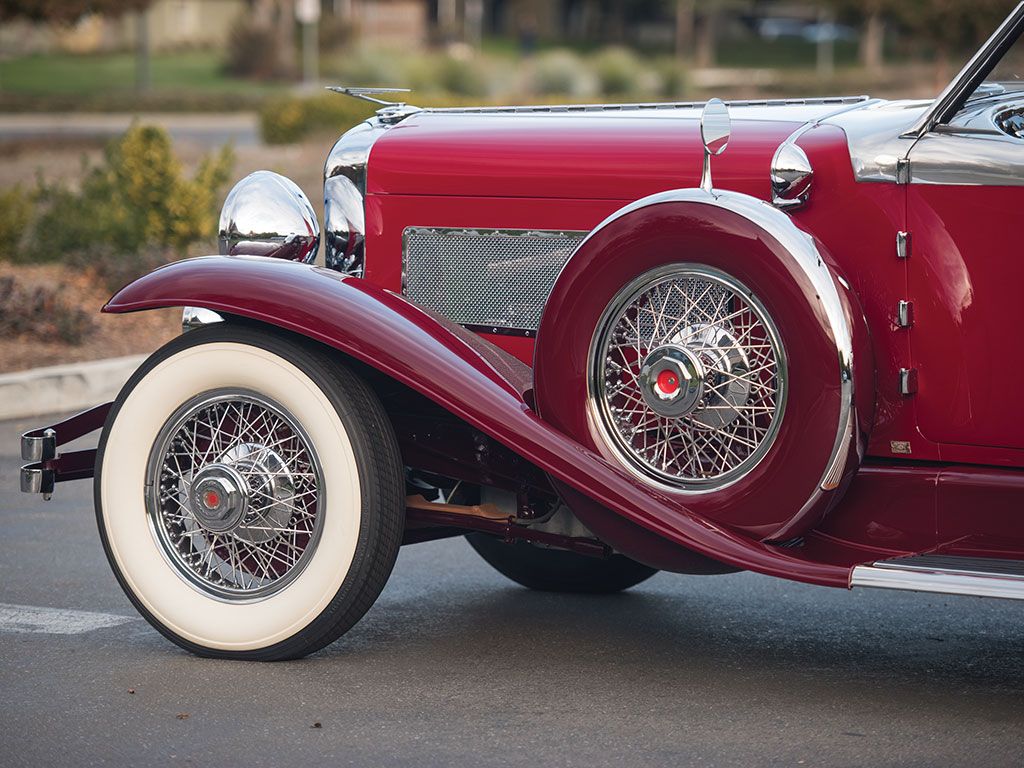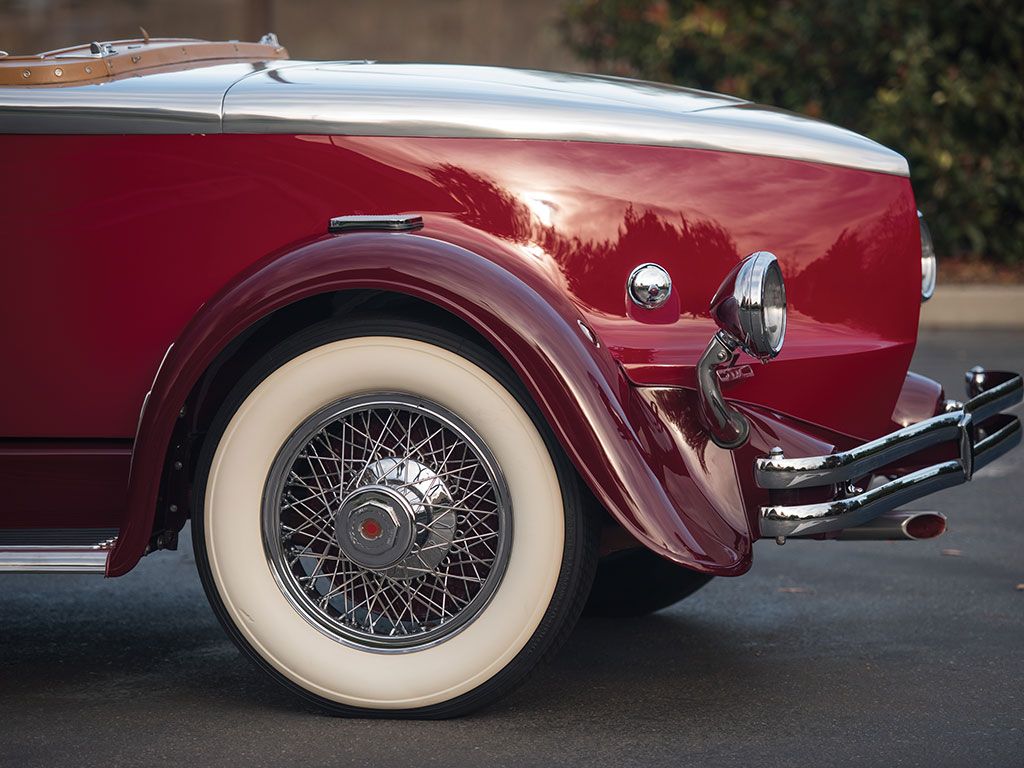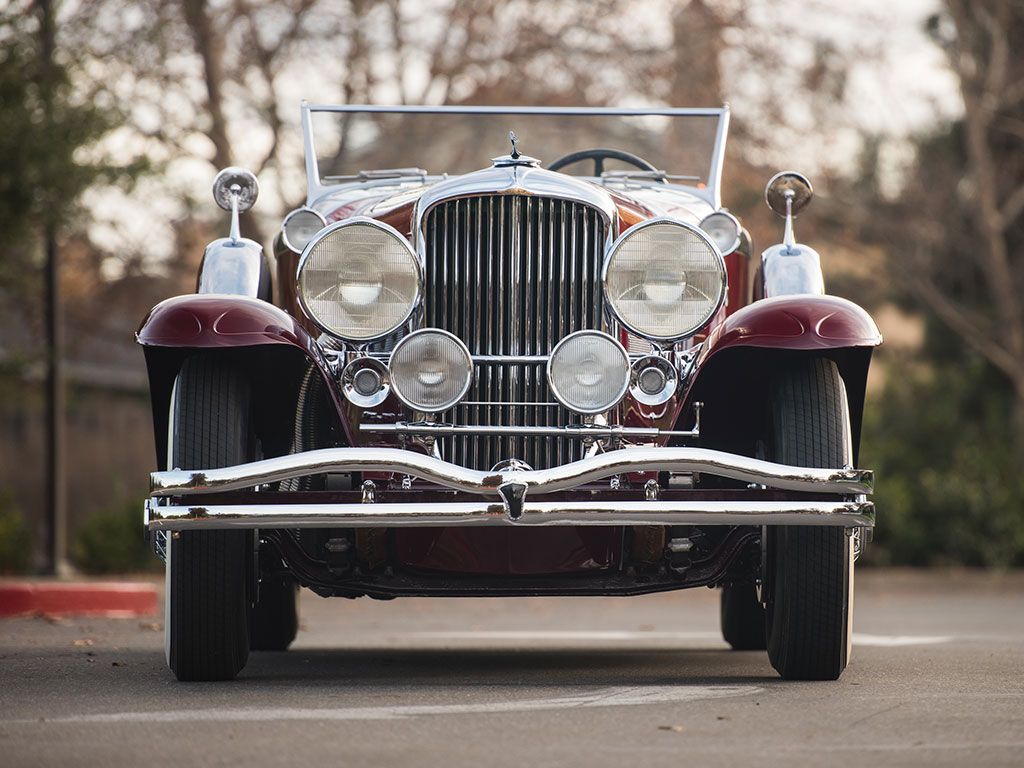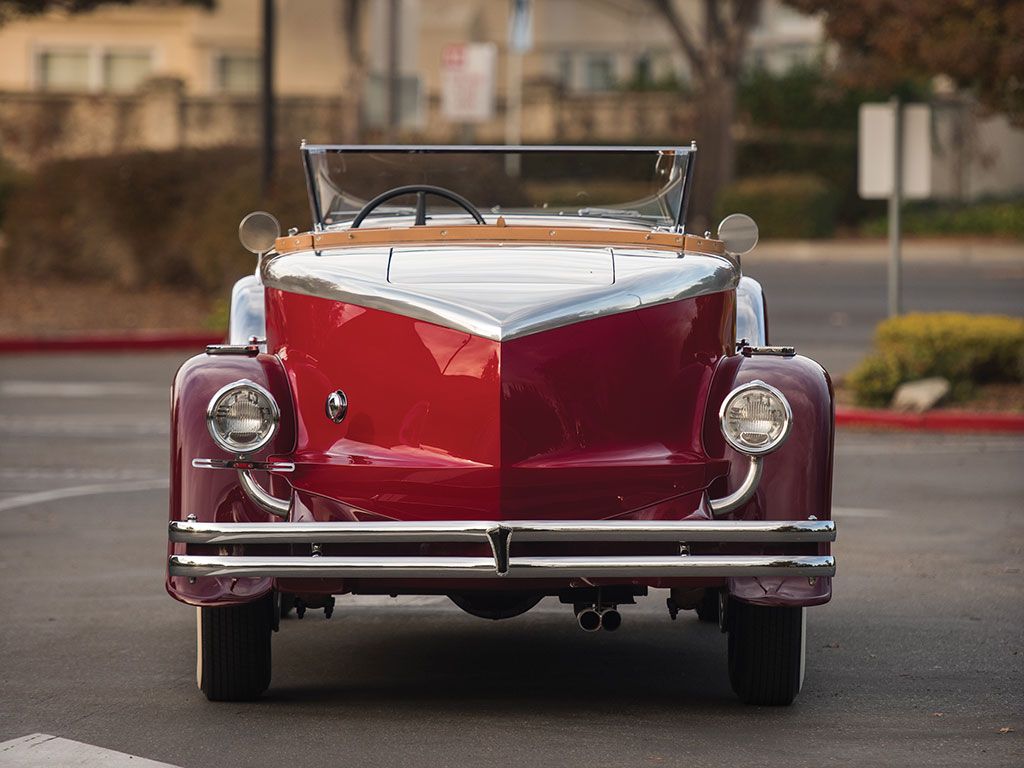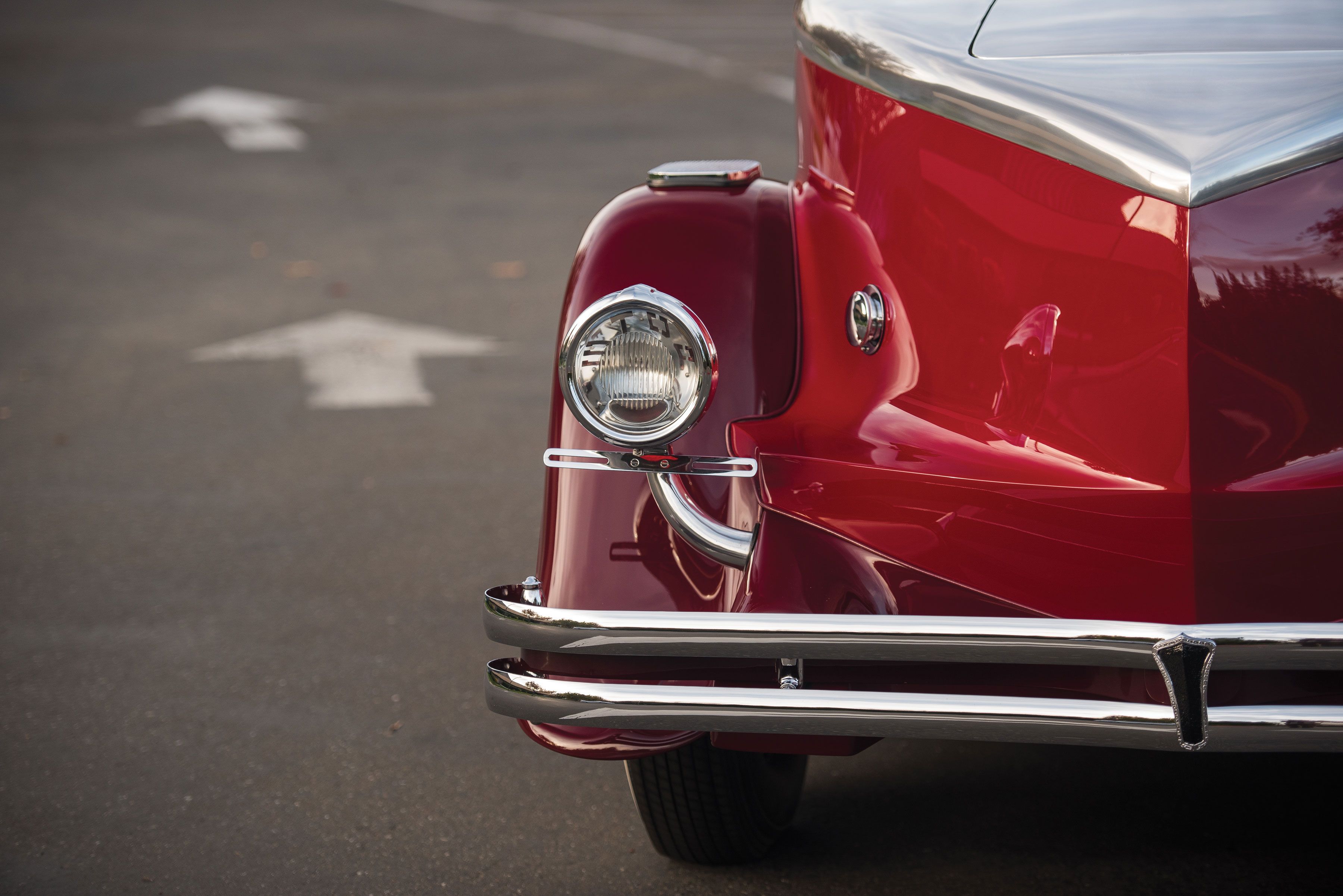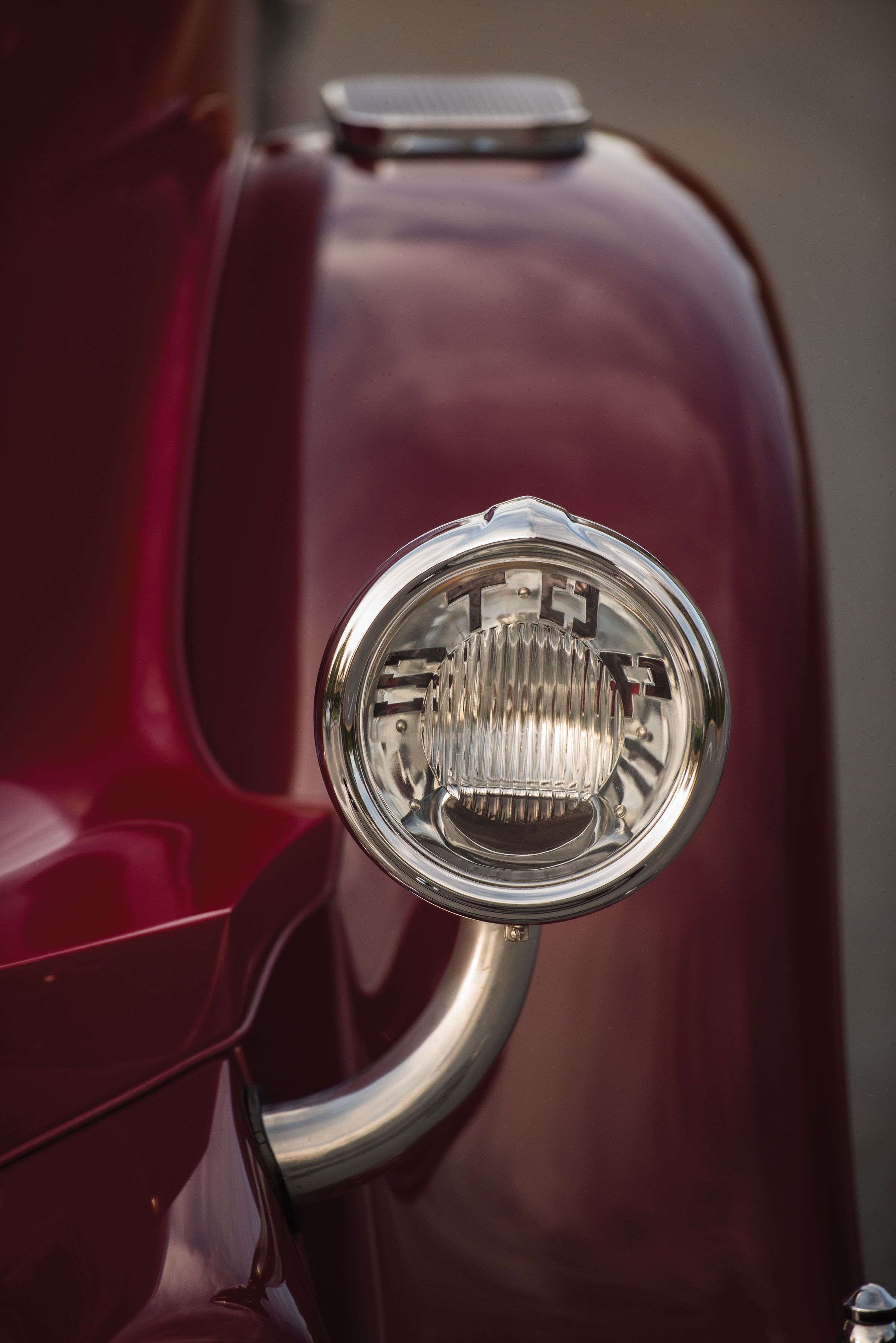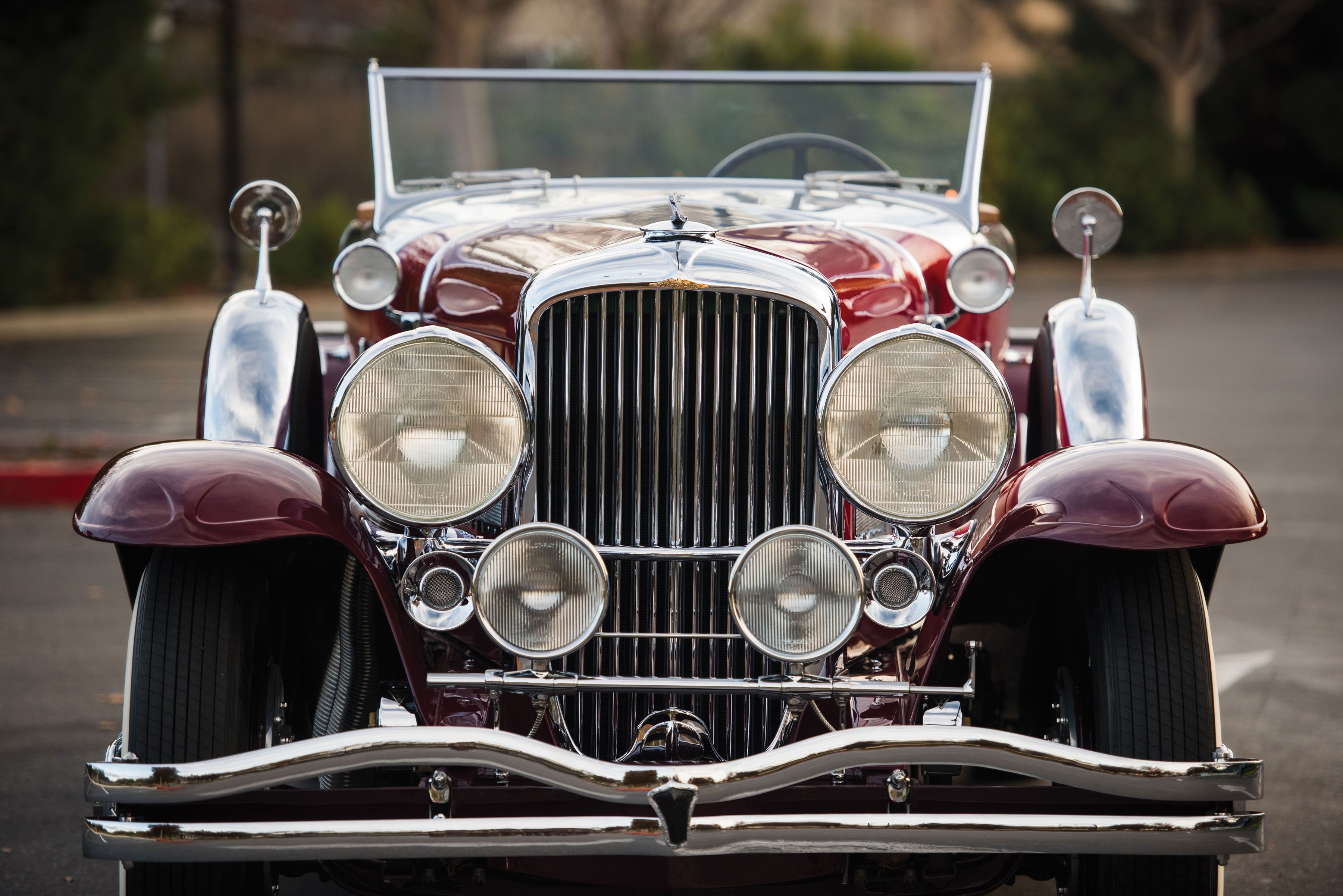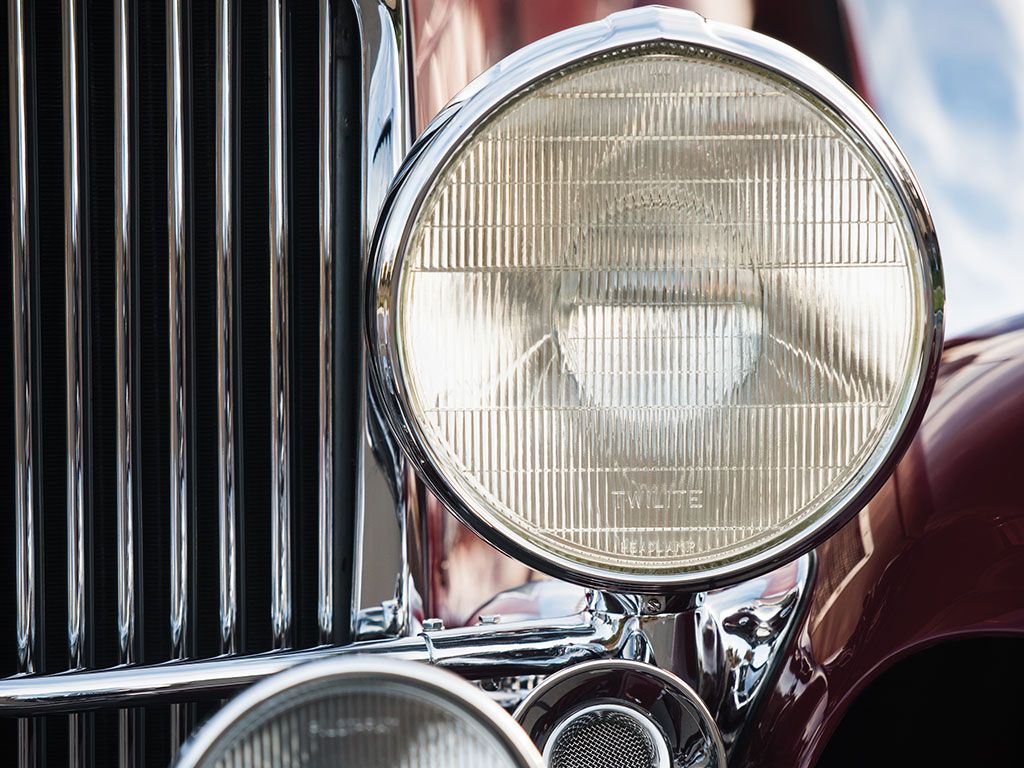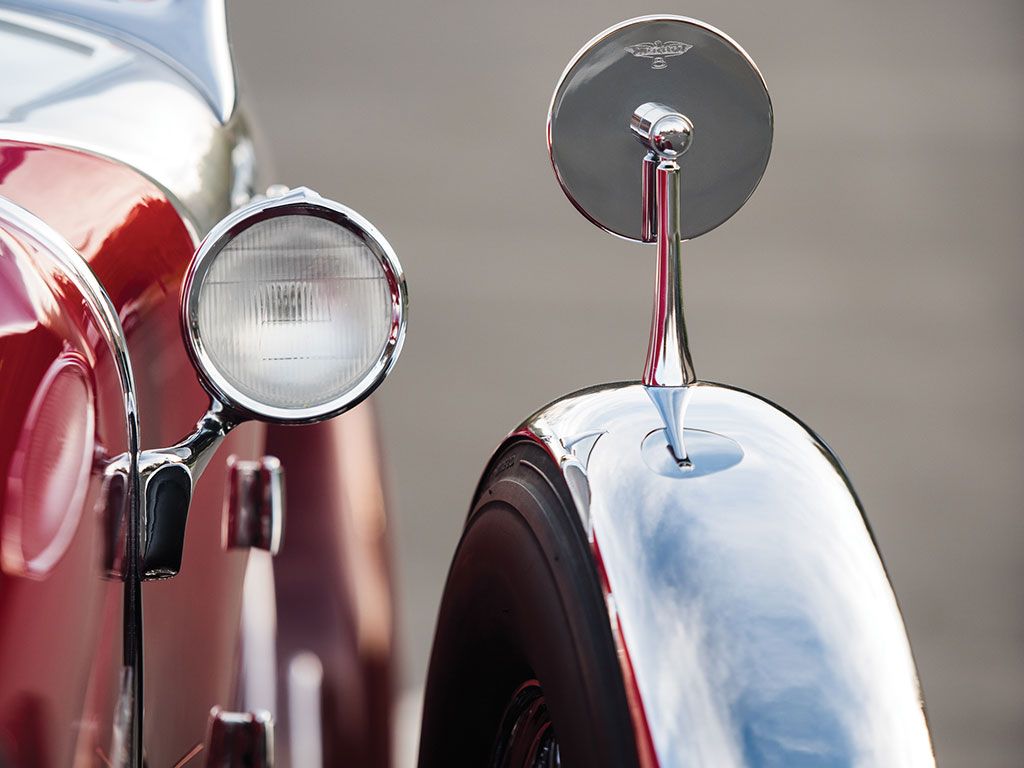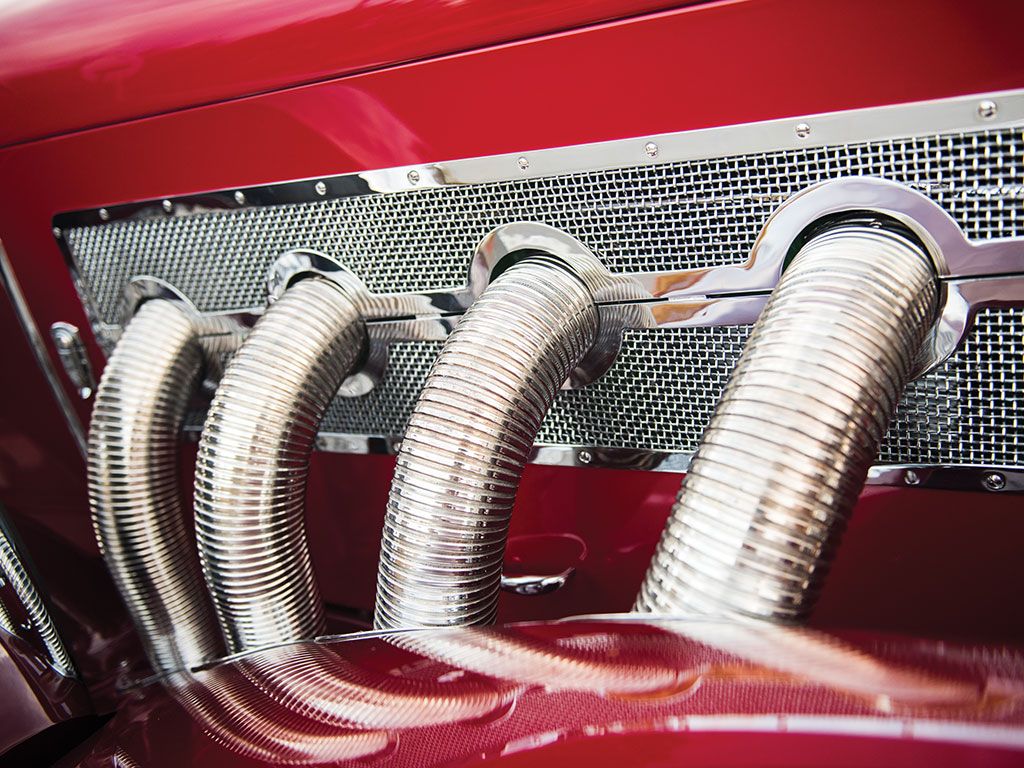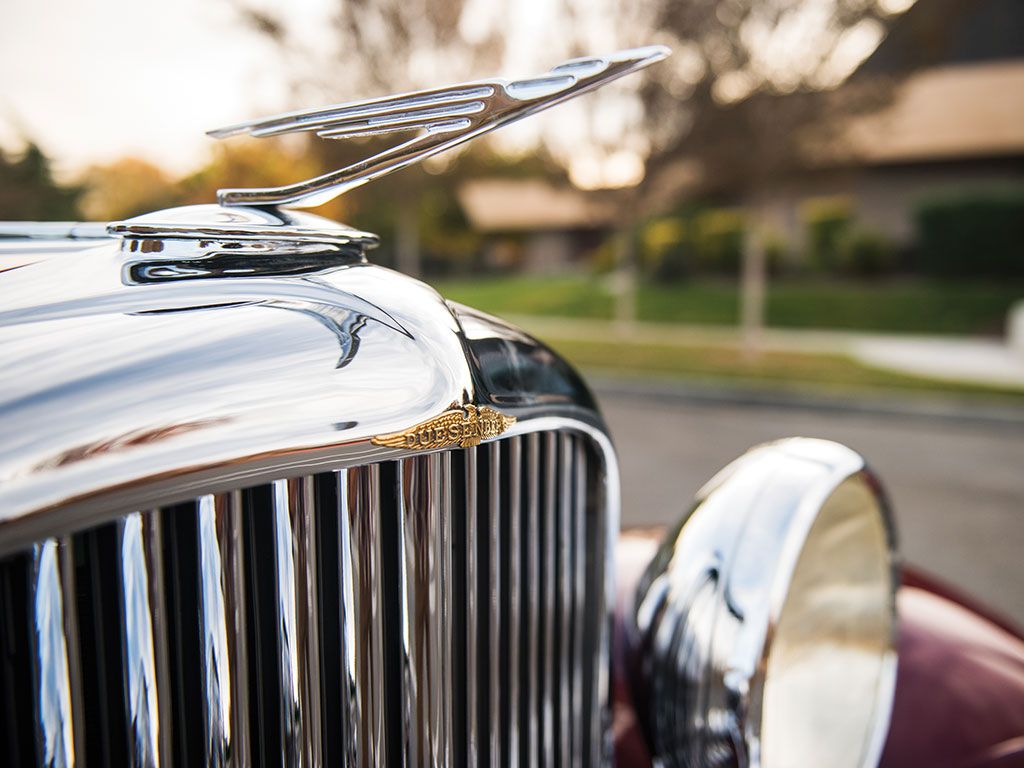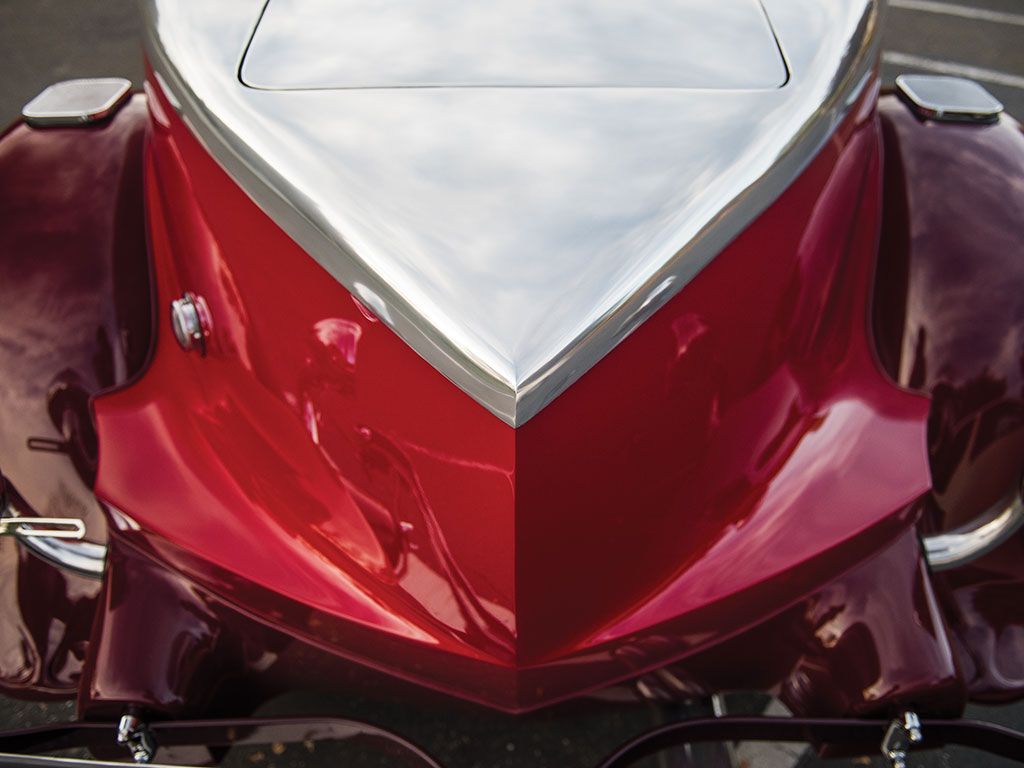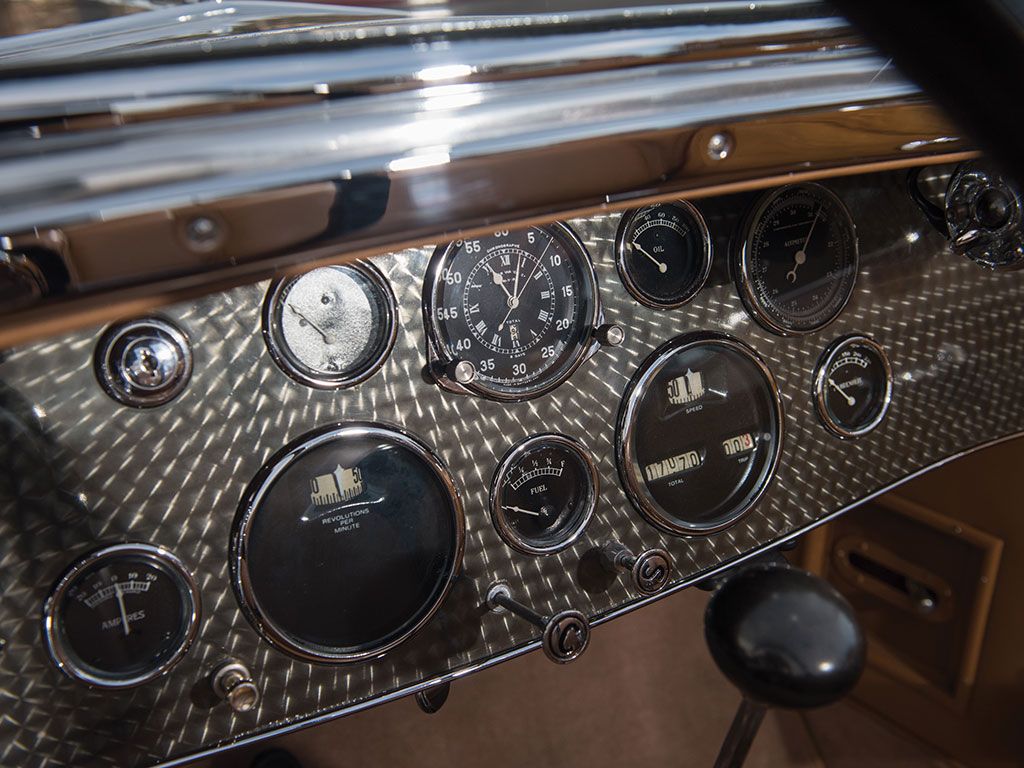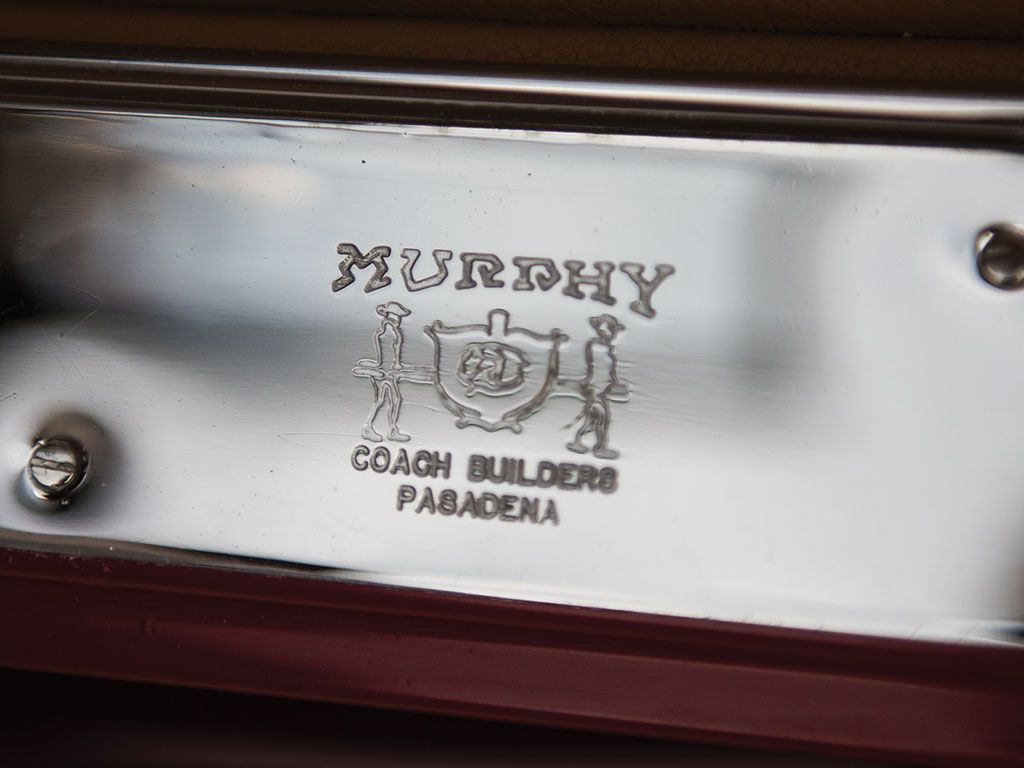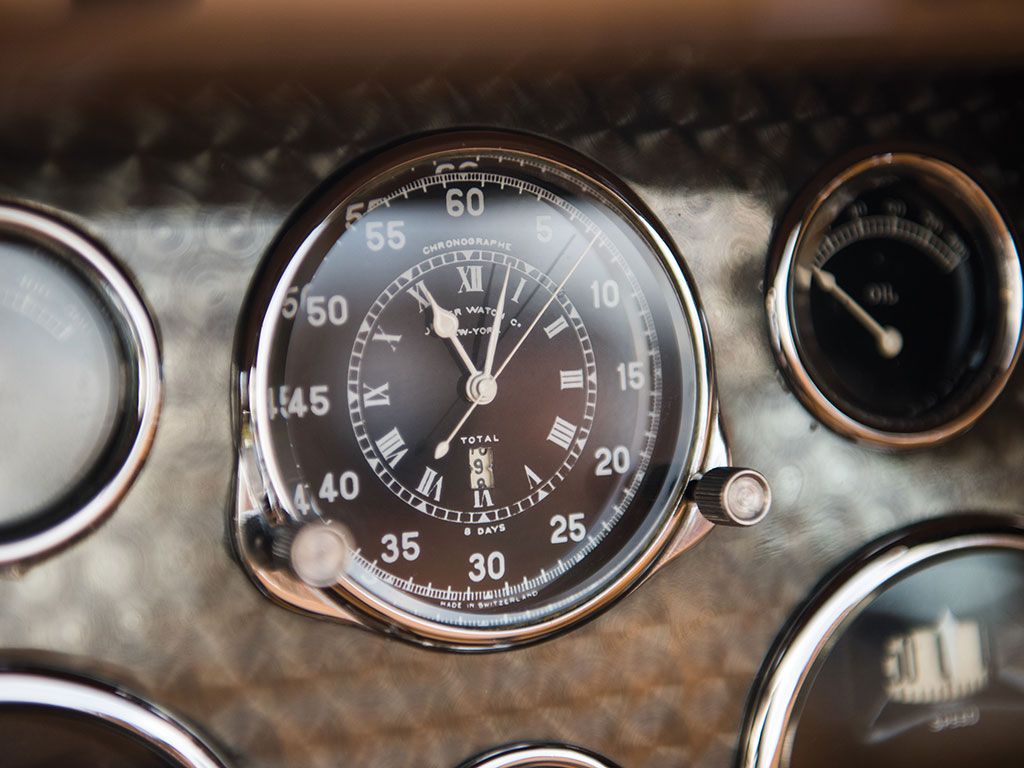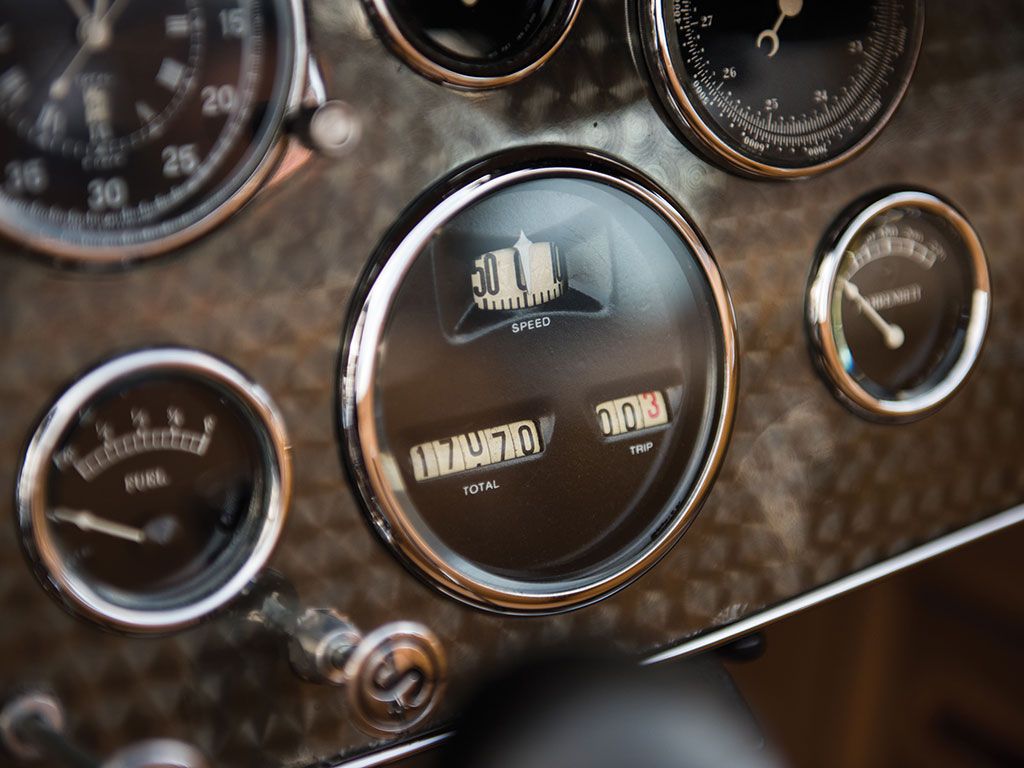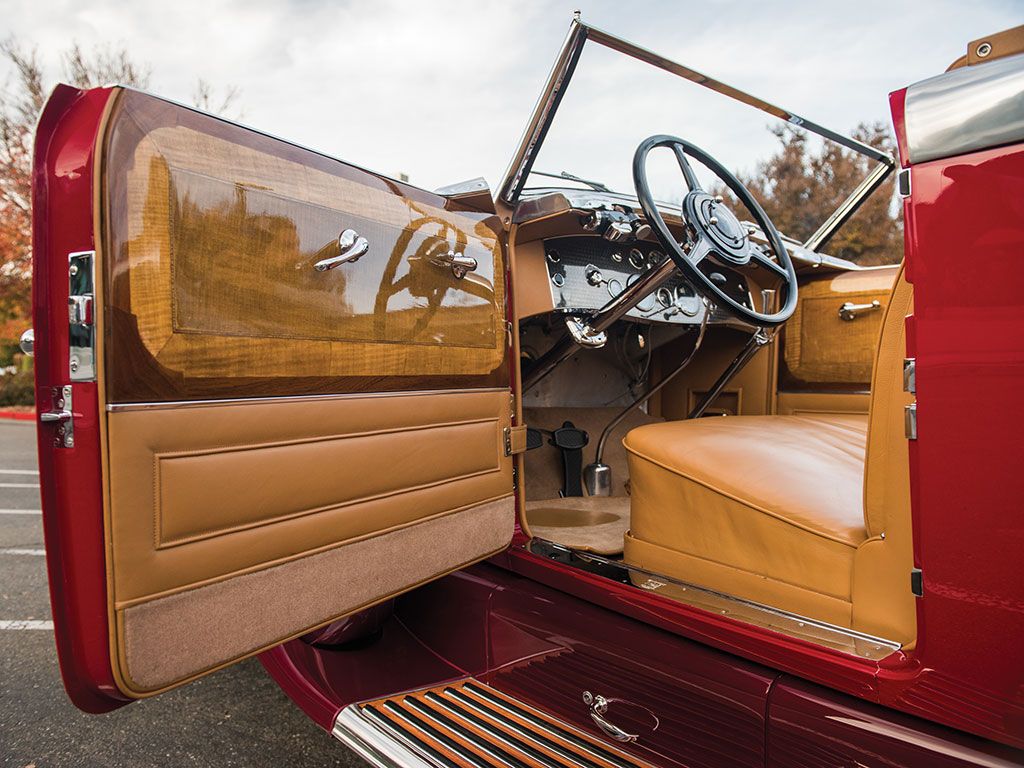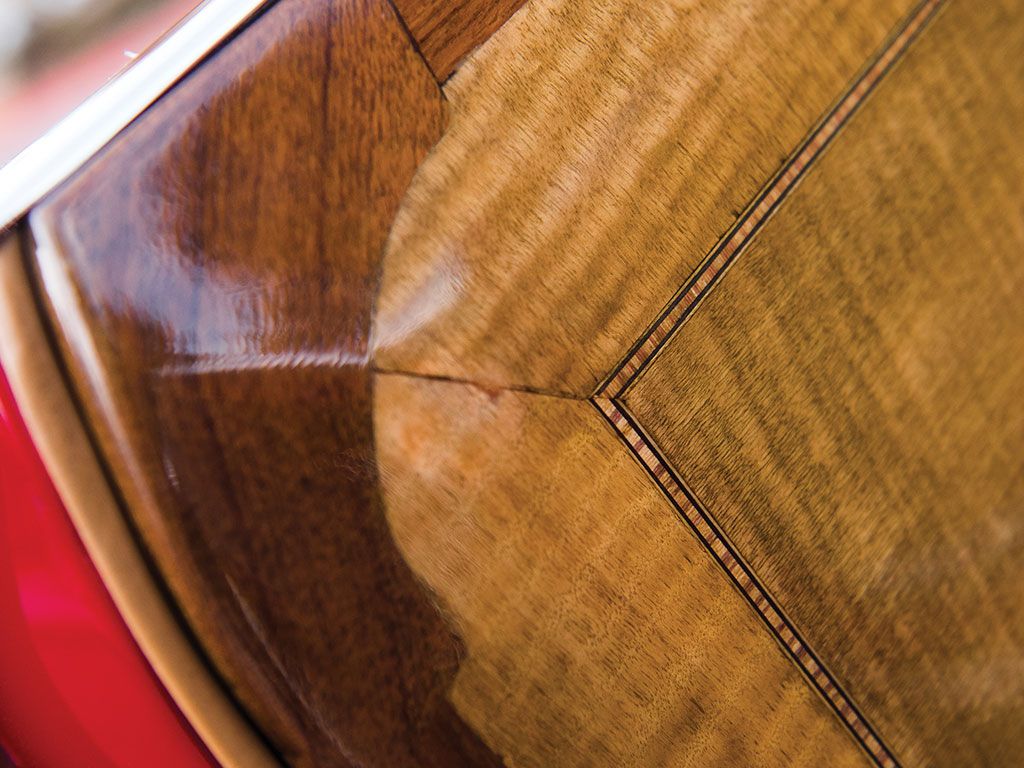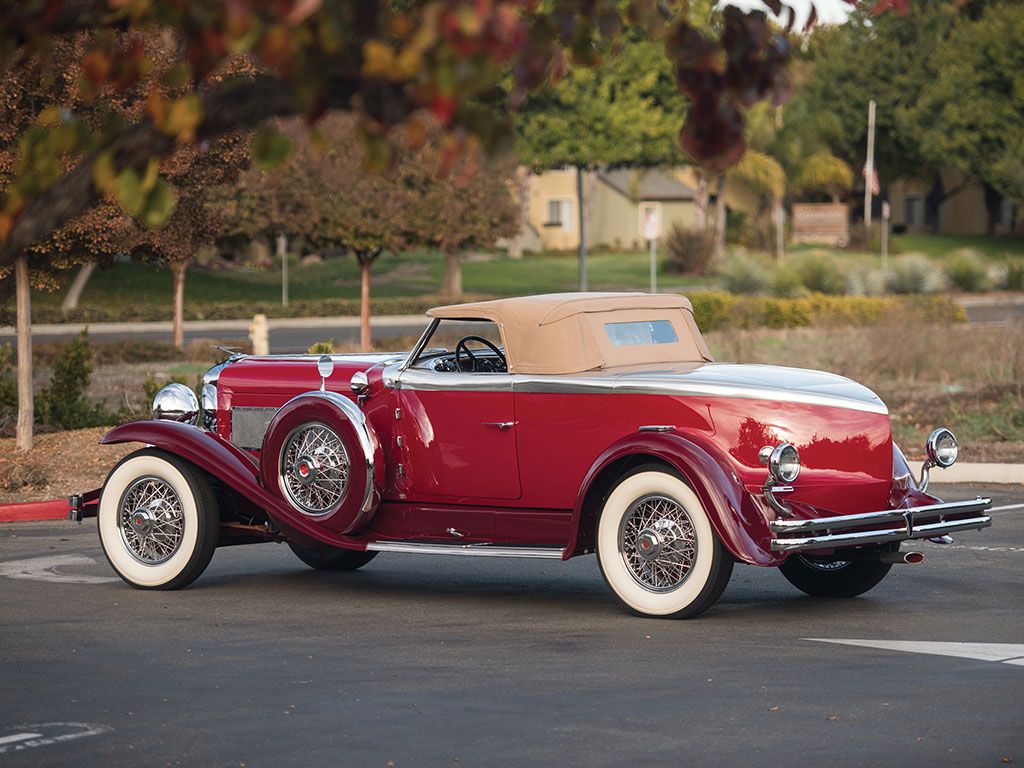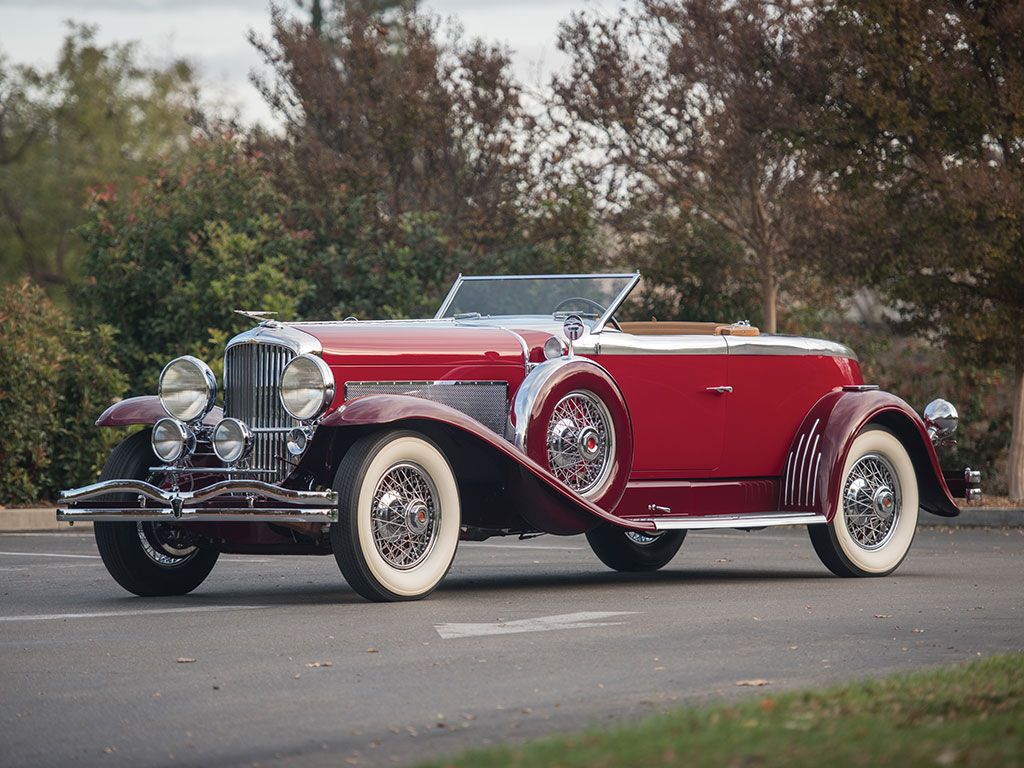There is no version of the Duesenberg Model J that isn't a rare work of art. In the style of the best of the prewar luxury cars,->ke505 each body was custom made by a third party coachbuilder, and even two cars with the same style were never completely identical. These were some of the most expensive cars in America at the time, frequently costing as more than double the price of Cadillac'->ke18s top-end V-16 models. For the coachbuilder Murphy, of Pasadena, California, the Disappearing Top Torpedo Convertible Coupe body built in very limited numbers for the Duesenberg Model J is generally considered to be the company's finest work.
So the car you see here is Duesenberg'->ke1143s finest clothed in Murphy's finest, obviously a highly sought-after car. It was bought new by David Gray, a Californian whose father had been an early investor in Ford.->ke31 When he sold his stake in the company back to Ford, he had become almost unfathomably wealthy, and David was able to get, at the very least, an incredible car out of the deal. The car has been featured on a number of book and magazine covers as a standout example of a Duesenberg, and now it's going up for auction.
Updated 02/08/2016: This classic Model J Disappearing Top Torpedo Convertible Coupe by Murphy was auctioned for the impressive amount of $3 million - just another proof that Duesenberg used to create very cool cars.
Continue reading to learn more about the 1929 Duesenberg Model J Disappearing Top Torpedo Convertible Coupe.
1929 Duesenberg Model J Disappearing Top Torpedo Convertible Coupe
- Make: Array
- Model: 1929 Duesenberg Model J Disappearing Top Torpedo Convertible Coupe
- Horsepower: 265
- [do not use] Vehicle Model: Array
Exterior
All of the units of the Torpedo body differ slightly from one another, but this one actually has an entirely unique “boat tail” rear end. Records show that this also originally incorporated a single-occupant rumble seat, but this was later deleted, probably during some restoration work after the car was used as a source for parts by a dealer in Los Angeles. Among the other differences are the chrome “rub strips” that extend from the running boards onto the rear fenders. This little Art Deco touch was common on a lot Model J bodies, but The other Torpedo bodies only had the strips on the running boards, and it is just this one that has them on the fenders.
The Model J was huge with whatever body it had, with a 142.5-inch wheelbase as standard and an optional 153.5-inch extended wheelbase as an option. So depending on the body, the Model J tended to weigh an average of 2.5 to 3 tons, so even if this car is on the lighter end of the spectrum, it is still very heavy. Murphy made a number of “Disappearing Top” bodies for the Model J, so this particular design element wasn't unique to the Torpedo body, but it was still a nice touch. Most convertibles in the day had roofs that folded down but then just sat there. With the Disappearing Top models, it would fold down into the bodywork, and then a leather cover would snap into place. This is more or less the norm today, but in 1929 it was a big deal.
Interior
The interior of this and most other prewar cars was a pretty simple affair. The thing that makes it a luxury car is in the materials used and the attention to detail. But there are still a couple of features of particular note. The first of these is the turned metal dash, it was a time-consuming process to make these, but it was meant to evoke an airplane control panel, and airplanes were the absolute pinnacle of cool technology in 1929. The other thing that is of note is the huge veneered wooden panels on the doors. This was normal for Murphy, but while some wooden trim was and still is pretty normal in a luxury car, panels of this size have always been uncommon, and it gives the door an almost furniture-like appearance.
Drivetrain
Like the Cadillac Sixteen, the other great American prewar luxury car, the engine in the Model J was the car's raison d'etre. Duesenberg had been an early standout in American auto racing, and it was because of this that when the company was strapped for cash in 1926, E.L. Cord bought the company up in order to acquire the considerable engineering talent of the Duesenberg brothers. So when the Model J engine was developed in 1928, it wasn't actually even built by Duesenberg, just designed there. The engine itself was built by Lycoming, a different division within the Cord company. It was a 6.9-liter inline-8 that produced 265 horsepower. At a time when companies like Cadillac and Packard were concentrating on engine that ran smoothly, Duesenberg was aiming to make a fast car. And even being as heavy as it was, the Model J is believed to have been the fastest passenger car in the world at the time, although official records for these things didn't exist until after WWII.
Prices
When it was new, a Model J chassis by itself was $8,500 (about $117,000 in today's money) without the body. A custom made body could easily double that price, and a couple of special-bodied went for a total of $25,000 ($346,000 today). Just the chromed exhaust manifold that you see on this car was a $927 (about $13,000) option. It should be noted that there were a few different versions of the Model J, with the main two being the “regular” Model J and the supercharged Model SJ. Only 36 of the 472 Model J chassis made were supercharged, so those are obviously worth a good deal more than the naturally aspirated cars. So, since this car isn't one of those few supercharged examples, it wasn't able to beat the $10.34 million record for a Duesenberg set by the Whittell Coupe at an auction in 2011. But, the rarity of the body type means it was still able to sell for more than those other “regular” Model J cars, pulling $3 million by the time the hammer dropped. That's not bad at all considering RM Auctions estimated it would sell for between $3 million and $3.5 million.
Competition
Pierce-Arrow Silver Arrow
Technically built as a concept for the 1933 New York Auto Show, the Silver Arrow would end up having 5 units made, only one fewer than were made of the Torpedo body of the Model J. The car was revolutionary in its streamlined design, the most fully realized example of Streamline Moderne/Art Moderne in automotive design ever seen up to that point. To round things out, it had an exquisite interior and a V-12 under the hood, an outstanding example of prewar American luxury.
Read our full review on the Pierce-Arrow Silver Arrow here.
Bugatti Type 41 Royale
It must have always made Ettore Bugatti a bit sore that he had gone to so much trouble to make a car specifically for royalty only to have nobody of royal lineage buy one; while several members of Europe's royal families bought various versions of the Model J. Still the Royale was a monumental symbol of excess, one of the biggest cars of all time, and equipped with a positively insane 12.7-liter inline-8 engine (one even had a prototype 14.7-liter version). No car before or since was ever quite so ambitiously, excessively opulent. Six were made, and they are among the most valuable cars in the world now.
Read our full review on the Bugatti Type 41 Royale here.
Conclusion
The real shame about the Duesenberg Model J is that it was exactly the wrong car from exactly the company for its time. While Cadillac might have survived the Great Depression a bit rattled but still functioning, Cord was nowhere near as big a company as General Motors, and the backing behind Duesenberg and its money-is-no-object Model J just couldn't weather the storm of economic downturn nearly as well. If not for that, today America might still have a company to rival Rolls-Royce, and we might be a bit more ambitious in our definition of luxury. But at least today we have the Model J to stand as a symbol of how we gotten it exactly right at times.

